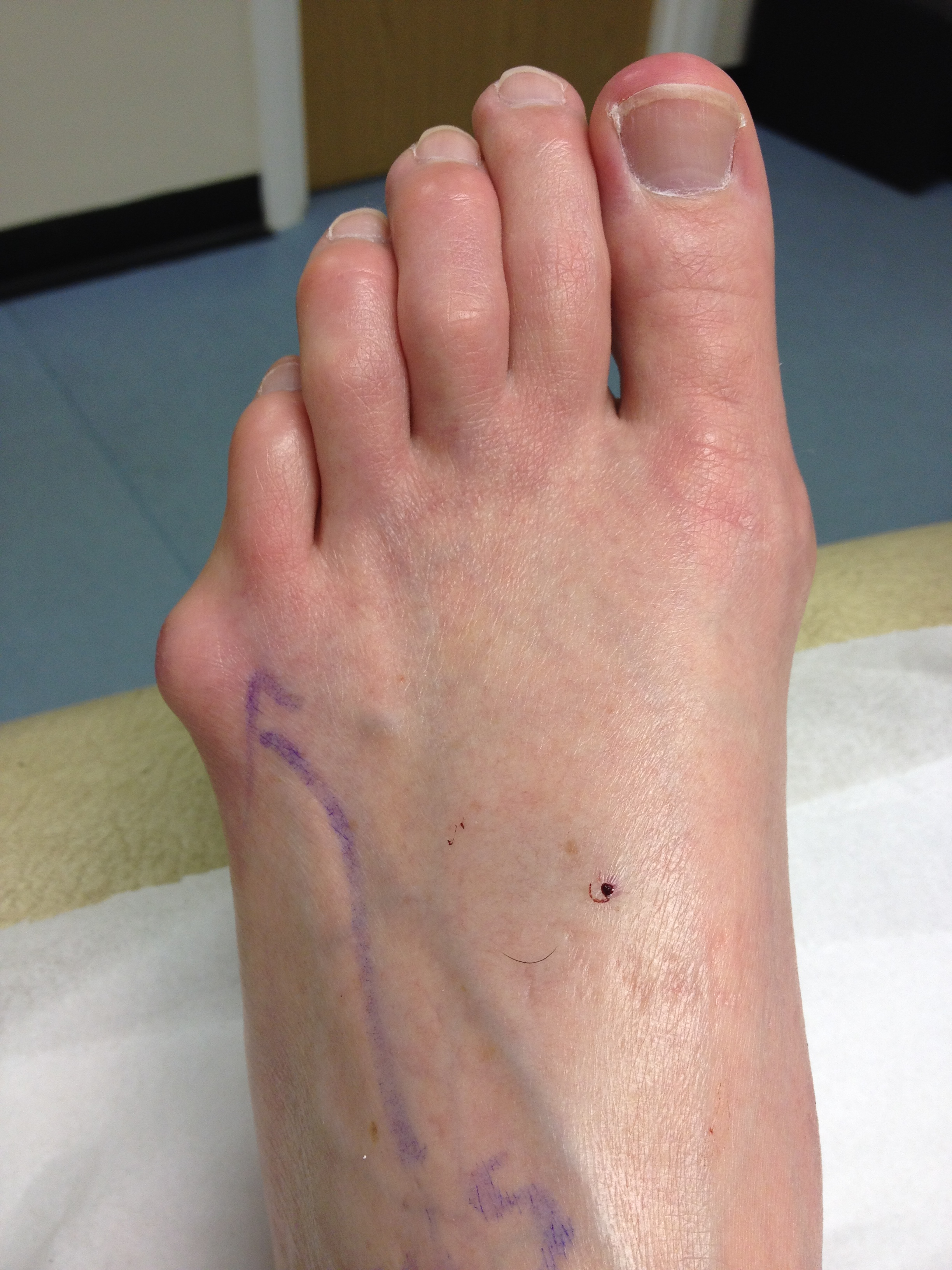But were too afraid to ask
- We work together with The Yorkshire Foot Hospital and Bunion surgery is nearly always carried out under local anaesthetic
- Most cases DO NOT require plaster casts
- It has a quick recovery time.
- Recovery is around 6 weeks after which patients can begin to return to normal activities and footwear.We are the only stand alone hospital in Yorkshire and pride ourselves in our care to alleviate your symptoms as quickly as possible.
- ARE YOU ON A WAITING LIST and in pain, book an appointment today.
- Finance agreements are available.
What is a bunion?
A bunion, or Hallux Valgus, is a bony formation, usually on the joint of your big toe. This condition can also occur on the pinky toe, known as a bunionette.
Pressure on the toes changes their shape and the foot structure which can turn the big toe inwards toward the others. In doing this, the joint of the big toe is forced to compensate by angling outwards. This continues for years and progressively becomes more pronounced and severe over time.
Do bunions go away on their own?
No! Bunions are a progressive condition, a bunion will only get worse without treatment.
What are the symptoms of a bunion?
A bunion can cause symptoms such as:
- A corn or callus bump on the side of your foot near the big toe joint.
- Pain and tenderness of your foot and big toe.
- Redness and swelling/inflammation of the affected joint.
- Restricted mobility of the big toe.
What happens if bunions are ignored?
A bunion on the joint of your big toe can cause arthritis if left untreated. Arthritis is a painful condition wherein … It can also cause the fluid sac surrounding the join to become inflamed, known as Bursitis.
What causes a bunion?
Whilst no-one can agree on a specific cause, there are a few common factors which can increase your liklihood of developing a bunion. These are:
- Wearing poorly fitted or tight fitting shoes around your toes causing the foot shape to change.
- The shape and structure of your foot from birth. Bunions are considered to be a hereditary disease by many scientists.
- Having an existing inflammatory condition, such as arthritis.
How can you diagnose a bunion?
One of the easiest ways to diagnose whether your pain and symptoms is due to a bunion is to seek help from a consultant podiatric surgeon. The surgeon may request X-Rays of your foot to ensure an accurate assessment and diagnostic.
What age can you develop a bunion?
In most shoe-wearing countries, the age at which people first become affected by bunions is in their 20’s – 30’s with women being more affected.
Can shoes worsen your bunions?
Wearing flat shoes with no support such as flip flops can affect your walk and cause more pain. This is because of biomechanics. Your toe does not touch the ground due to the bunion which means your foot has to compensate by rolling to allow your toe to meet the ground. Wearing supportive, but not constricting, shoes are recommended.
When should I see a specialist about my bunions?
If your bunions are causing you severe pain, seek help immediately.
But, you should also try and see a healthcare professional prior to intense pain as bunions are a progressive condition which will not go away. If you notice a hard lump on the side of your foot and you’re experiencing low toe mobility – get in touch today.
If you’re struggling with a foot pain, call us today to start your journey to a pain-free life.
Alternatively you can contact us HERE.
Our podiatrists are waiting to help you bring some normality back into your everyday way of living.
t: 0113 418 0282
e: info@footpaincentresofleeds.co.uk
w: Visit our podiatry page for more information.
Previous post: 10 Reasons why your toes might be painful
Next post: What you should know about Bunion Surgery!
